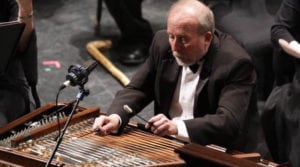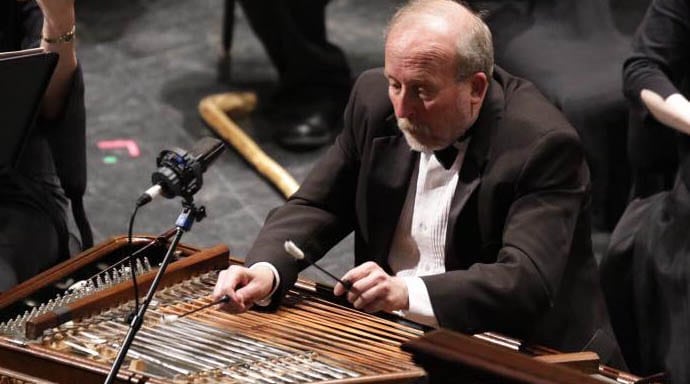Posted May 9, 2019
Dear neighbors and fellow Denverites,
 I look forward to performing Zoltán Kodály’s Háry János Suite with the Denver Philharmonic at Victory. This piece is the best-known work for cimbalom and orchestra—and Kodaly’s fluency in capturing the best features of the instrument are there for all to hear—and see.
I look forward to performing Zoltán Kodály’s Háry János Suite with the Denver Philharmonic at Victory. This piece is the best-known work for cimbalom and orchestra—and Kodaly’s fluency in capturing the best features of the instrument are there for all to hear—and see.
Growing up with a Hungarian father in suburban Chicago, I was exposed to the cimbalom as a (very) young boy. I can recall attending ethnic functions on the banks of the Fox River in Elgin, Illinois, with kettles of Goulash letting out a pungent smell—alongside the very unusual and evocative sound of the cimbalom. Years later, I would accept the challenges that some elderly Hungarians made to me when I was in the eighth grade. “Here is the instrument, now you should learn to play it.”
With a few years in between, I was able to study in Hungary and then have a career of recordings and live performances with some of the outstanding orchestras in the world. Two of my favorite memories are sitting in the playback booth with Sir Georg Solti of the Chicago Symphony, who seemed quite pleased with the recording we made. Later, I would record Bartók’s only work for cimbalom, his Rhapsody No. 1 for Violin and Orchestra with Pierre Boulez conducting and Gil Shaham as soloist.
A shift in career from performer and teacher to manager and leader has limited my time to practice, rehearse and perform. I’m grateful for this invitation to “dust off” the mallets, tune the strings once again and enter the enchanted world of Kodaly in his recreations of recordings he made in the field.
So by the end of the performance, we will all know the answer to the question at hand. Am I an artist who is also a Dean at CU Denver, or a Dean at CU Denver who is also an artist? I’ll let you decide.
Buy now for Victory

